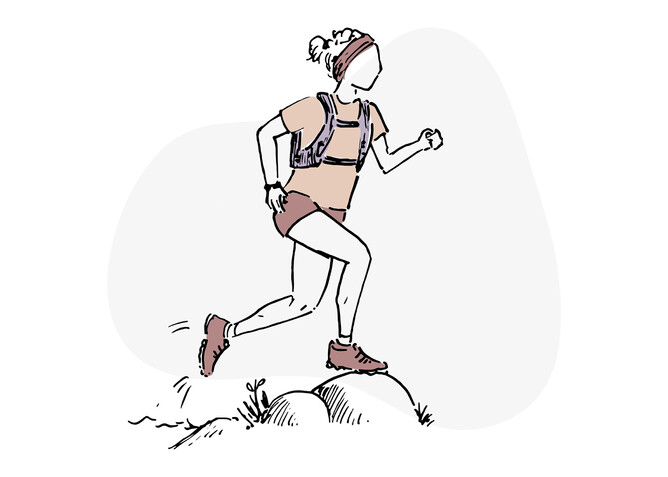POP at 36 / Story at 42
My third child was about nine months old when my POP appeared. I was 36. My first child was born via emergency C-section. My second labour was long, with episiotomy and tear, “not well stitched”. I forget who said it, but remember those words. My third was a lovely labour. Baby was nine months, I was returning to running, chronically constipated (due to previous labour, maybe rectocele is my guess) and had recurring sinus infections (due to a chronic shoulder issue), so was constantly blowing my nose. (Thanks to prolapse, I am now aware that all these things are related.) Those three factors were too much pressure for a pelvic floor weakened by carrying three large babies and going through two labours.
After discussing my symptoms with my Mum (who has a prolapse) and googling, I determined I had pelvic organ prolapse. A GP confirmed my diagnosis and that was about it she seemed pretty clueless. Thanks to google, I thought my life was over, was severely depressed and spent about three days lying on the couch in despair wondering “why me?”. How could this have happened to a fit, strong, healthy woman?
I wanted a fourth child so made another appointment to see a GP. She had a prolapse, had gone on post prolapse diagnosis to have a fifth child and was a regular tramper. Despite her encouragement, there was still no physio referral or guide to improving my prolapse.
Back to google. I made an appointment to see a pelvic health physio, at substantial expense, including a 4-hour round trip from home. She confirmed I had stage 2 cystocele and stage 1 rectocele. She taught me how to do kegels, told me not to lift anything over 5kg and gave advice on my bowel motions. So my precious third child was never carried around by me again. The kegels really helped improve my symptoms and I carried on to have baby number 4. Another tear for my poor vagina. My wonderful midwife (who had just had surgery for her prolapse at 57 and ran 5km a day), insisted on referring me to the hospital physio.
Back to physio, kegels again but this time a bit more info on how to manage what was a very busy life without doing further damage to my prolapse – ie, how to lift safely and ‘the knack’. Continuing with this, and google contributing with femfusion youtube exercises, my prolapse improved. However, as a marathon runner before having kids, I really couldn’t accept a semi-sedentary life.
A chance comment by a friend on a facebook page led me to contacting a woman who was very open about her prolapse and how she had returned to an active life. She told me about pessaries, likening them to a sports bra for vaginas and also told me about a core programme she had done. I found Lauren Ohayon’s ‘Restore your core’ a good fit for me. Doing this programme regularly, my core and whole body became the strongest it had ever been.
I had also been working on my diet to try to improve my bowel motions. I limit gluten, take collagen, magnesium, prunes and kiwifruit, a probiotic, drink plenty of water, starting my day with two mugs of hot water, limit tea/coffee (though don’t attempt to live without them!) and just eat whole/real food as much as possible. An interesting aside: Lauren Ohayon is quite anti kegels, but for me they are very important and will be lifelong.
Still dreaming about running, I asked the hospital physio about a pessary. She suggested I see Lisa Carnie, a pelvic health physio in Wanaka, who fits pessaries. A 6-hour round trip and cost for me but worth it. Before the pessary fitting, Lisa asked me to see a GP to check my vagina for atrophy and after ten years of pregnancy and breastfeeding, mine did have some spots of atrophy. I was prescribed oestrogen cream to ‘plump’ up the vaginal walls and prevent the pessary damaging them further – a lifelong prescription.
Lisa fitted me with a cube pessary that I put in and remove daily. She looked at my breathing and posture and we discussed returning to running and ways to do that, including exercises to strengthen my glutes and leg muscles (as well as checking the strength of my vaginal muscles).
By now, I had learnt how breathing and posture had a huge role in my pelvic floor strength and was looking into running techniques that reduced the impact on the pelvic floor. I had always been a heel striker so was learning to mid strike and looking into barefoot or minimal footwear. Katy Bowman has some great books Diastasis recti and Move your DNA which I purchased, as well as Dynamic Aging for my Mum.
Since then, I’ve dabbled in running, not yet finding the time to return to it regularly. However, I’ve done enough to run a 10km race, completed the 6-hour Spirited Women adventure race, numerous mountain bike races and recently finished the 3-day, 62km, Hump Ridge track – with period and pessary! There was a bit of heaviness in my pelvic floor towards the end of that walk … the 10 tonne stainless steel insulated coffee plunger probably could have stayed home! Period and irregular bowel motions while out of routine also contributed. But despite that slight discomfort, I knew why it was happening, and that I needed to get home and back to kegels and the core restore programme.
There are still blips. Immediately after the success with the symptom free 10km race, I took on the role of calf rearer on the farm. However, too much heavy lifting for me, along with running my busy house, and prolapse symptoms returned.
While prolapse is a horrible thing and I wish it hadn’t happened to me, now at 42, I feel it has been a blessing in numerous ways. I am now stronger in my core and whole body, more knowledgeable about how my body functions – eg, the importance of ‘3D breathing’ and posture – and as long as I do my kegels regularly, sex and orgasms are better than ever. My husband has never noticed anything feeling different.
My main frustration with my story is the number of health professionals I had to see and pay for, the amount of research I had to do myself via google and facebook before I reached the ‘happy ending’ I feel I have. It still makes me angry and resentful that this could have been avoided with a 6-week check and advice from a physio. Especially knowing that there are women out there, not as proactive/obsessed as I have been or those not financially able to see the private physios I have seen, living with the depression and physical discomfort that comes with prolapse.


